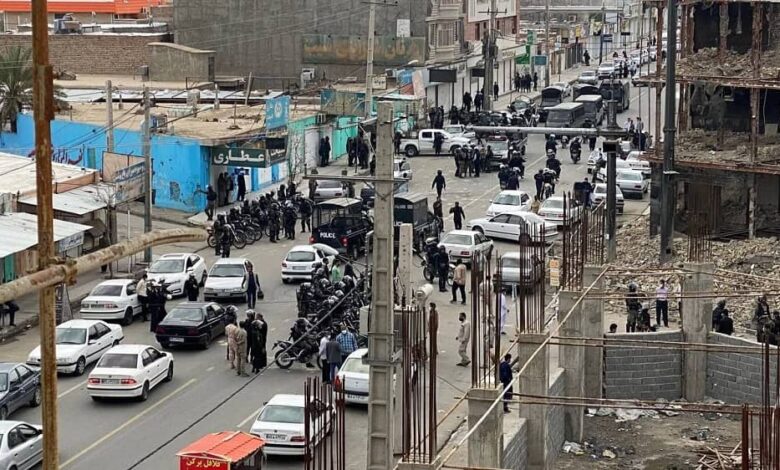Remembering Zahedan’s Bloody Friday: A Year Later in Iran

iran zahedan uprising 03032023 1
Written by
Mehdi Oghbai
The “Bloody Friday in Zahedan” is the tragic massacre of the deprived Baloch people by the regime’s security forces on September 30, 2022. This event is reminiscent of the “Black Friday” that occurred on September 8, 1978. During that shocking incident, the monarchic dictator desperately attempted to suppress the revolution. Remarkably, 44 years later, the ruling clerics repeated his fatal mistake by committing a crime on Bloody Friday in Zahedan.
However, Supreme Leader Ali Khamenei believed that he could quell the nationwide uprising by massacring its most deprived and poor segments that have nothing to lose but their miserable lives.
On that fateful day, thousands of Baluch citizens who were calling for justice and equality were shot by security forces, paramilitary units, and snipers stationed on rooftops. Numerous videos capturing this atrocious crime were recorded and widely shared on social media. Through these videos, the people of Iran witnessed Baluch worshippers and passing citizens soaked in their own blood, calling for help amidst the dirt and gore.
In this blatant crime against humanity, 120 Baluchi citizens lost their lives, and more than 300 were injured. Notably, this included four women and 17 children.
In a statement, Amnesty International highlighted that “security forces unlawfully fired live ammunition, metal pellets and teargas directly into the vicinity of the Mosalla, where hundreds of people, including children and older people, were still performing Friday prayers.”
Khamenei not only failed to express sorrow over this bloody tragedy but, 40 days later, he dispatched a delegation led by one of his affiliated clerics to Zahedan. Their mission was to suppress the uprising by threatening and intimidating the protesters. Instead, Khamenei’s representative praised the perpetrators of the massacre, promoting and motivating them.
Similarly, in Khash, on November 4, 2022 (the anniversary of the massacre of students and intellectuals in the 1979 revolution), the people were subjected to a bloodbath. In this horrific event, security forces killed 18 individuals, including two children.
These two massacres, occurring 36 days apart, aimed to deter the oppressed Baluch citizens from continuing their uprising. However, the Baluchistan uprising persisted and still does. “Bloody Friday in Zahedan” inspired other Friday protest rallies, becoming a lasting tradition of ongoing protests. Subsequently, every Friday, prayers and ensuing marches presented a significant challenge to the ruling establishment. Throughout the year, chants of “Death to the dictator” and “Death to Khamenei” kept alit the hope for change among people across the country.
NCRI statement on #IranProtests2022 no. 109
Iran: Khamenei Commits Another Crime Against Humanity by Killing Protesting Worshipers in Khashhttps://t.co/DptNtF70Bd— NCRI-FAC (@iran_policy) November 5, 2022
On Wednesday, November 9, 2022, the people of Iran, commemorating the fortieth day of Bloody Friday in Zahedan, stood in solidarity with their brothers and sisters in Baluchestan. For this reason, anti-regime protests erupted in Mahabad, Mashhad, Rasht, Shahrekord, Isfahan, Bandar Abbas, and Tehran.
Furthermore, students from various universities, including the University of Tehran, Amirkabir University of Technology, Pars University of Arts and Architecture, University of Social Welfare and Rehabilitation Sciences, Vali-e-Asr Rehabilitation Sciences University, and Tabriz University of Arts, held demonstrations, paying tribute to the innocent victims of that dreadful crime by raising revolutionary slogans.
In direct opposition to the state-sanctioned propaganda, which sought to legitimize the crimes against the rebellious Baluchistan and Kurdistan by labeling them as “separatists,” the knowledgeable people of Iran chanted: “Sanandaj and Zahedan are the beacons of Iran.”
Responding to this insightful and incisive revolutionary position, the people from Baluchistan chanted: “From Zahedan to Tehran, I sacrifice my life for Iran.”
Therefore, the remembrance of Bloody Friday reverberated both within the nation and globally, inspiring Iranians in the diaspora to amplify these slogans during their protests worldwide.
The wounds from Bloody Friday in Zahedan and Khash still deeply affect Baluchestan, a resilient region, and its people in Iran. Children in Baluchestan, victims of long-standing deprivation and corruption by the ruling clerics, remain unaware of why their family members were brutally killed after the Friday prayer sermon on September 30, 2022. Mothers in this troubled region still grieve the loss of their loved ones. Many families lost their breadwinners, and numerous wounded individuals now live in wheelchairs.
The courageous people of #Zahedan & Rask took to the streets after their Friday prayer chanting, “Death to Khamenei,” “Death to Basij” & “Khamenei is a criminal” Our Baluch compatriots displayed the resolve of all Iranians to overthrow the regime & achieve freedom#IranRevoIution pic.twitter.com/mrGH2AnCge
— Maryam Rajavi (@Maryam_Rajavi) January 27, 2023
The martyrs of Bloody Friday in Zahedan have become potent symbols of oppression and resilience, deeply ingrained in the revolutionary culture. From “Hasti Narui,” the 7-year-old Baluchi girl martyred by a tear gas canister hitting her head, to “Khodanur Lejai,” symbolizing the enduring fight for democratic revolution by the Iranian people through her arrest and restraint to a flagpole.
Fridays in Zahedan still embody a chain of uprisings and a longing for freedom. This unavenged blood will keep the spirit of protest alive. Baluchestan has resolved never to regress and will persist in its march forward.

